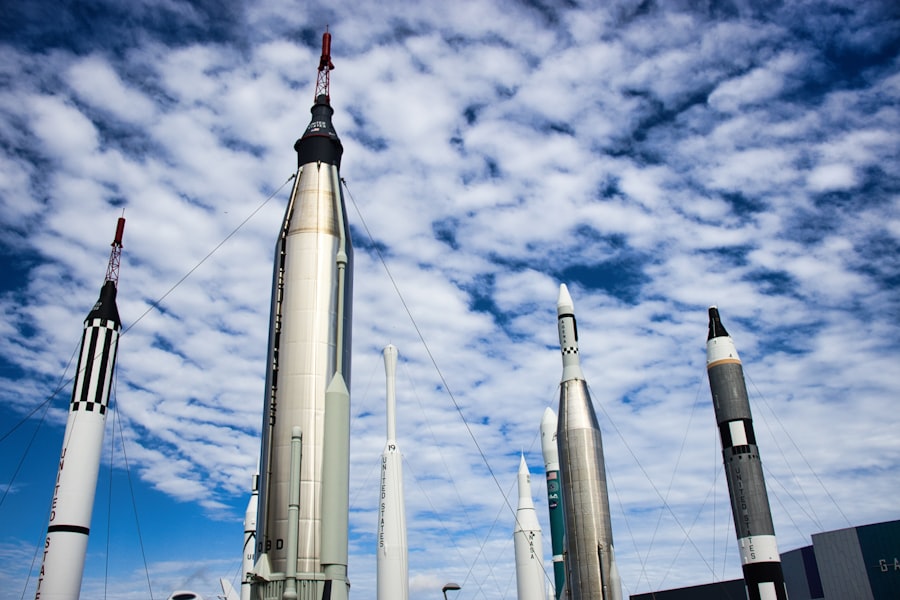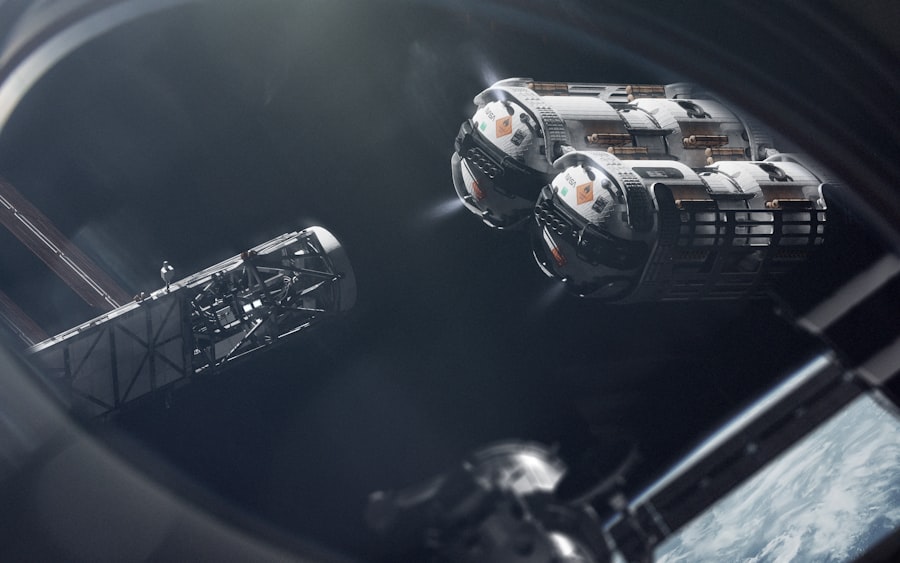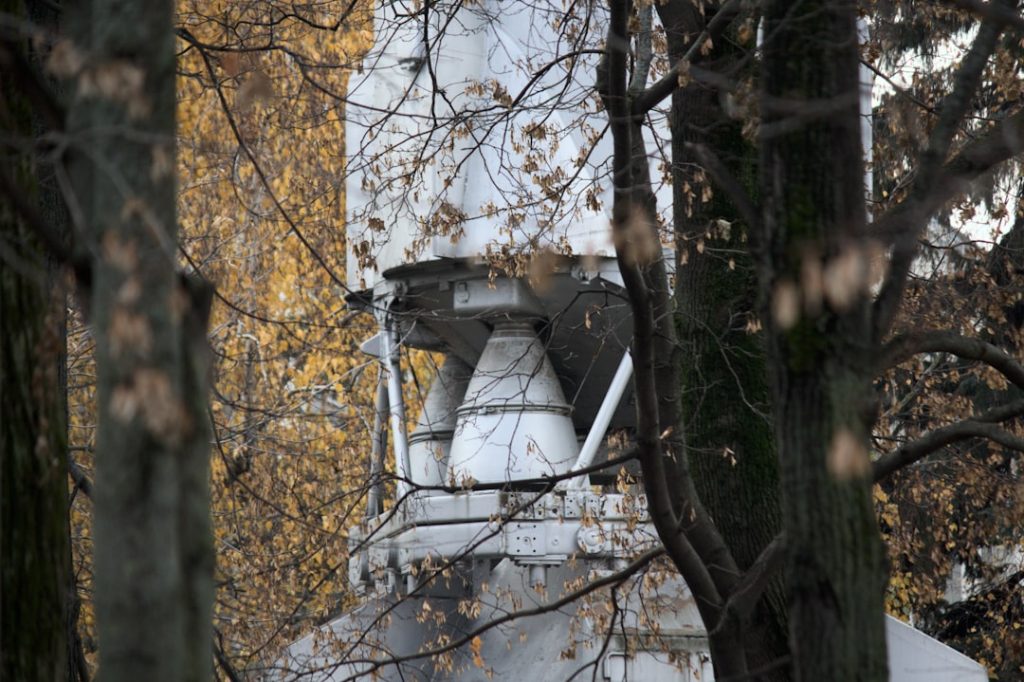The realm of space exploration has always been a frontier of human ingenuity, pushing the boundaries of what is possible. As we stand on the cusp of a new era in space exploration, cutting-edge technologies are emerging that promise to revolutionize our understanding of the cosmos. These advancements are not merely incremental improvements; they represent a paradigm shift in how we approach the challenges of exploring distant worlds, understanding celestial phenomena, and potentially establishing a human presence beyond Earth.
From advanced propulsion systems that can traverse vast distances in shorter timeframes to sophisticated robotics that can operate autonomously on alien terrains, the innovations being developed today are setting the stage for unprecedented discoveries. The urgency for these advancements is underscored by ambitious missions planned for the coming decades. With organizations like NASA, ESA, and private companies such as SpaceX and Blue Origin leading the charge, the race to explore Mars, the Moon, and beyond is intensifying.
The technologies being developed are not only aimed at reaching these destinations but also at ensuring that we can conduct meaningful scientific research once we arrive. As we delve deeper into the specifics of these technologies, it becomes clear that they are interconnected, each playing a vital role in the broader tapestry of space exploration.
Key Takeaways
- Cutting-edge space exploration technologies are revolutionizing the way we explore the universe, enabling us to reach further and gather more data than ever before.
- Advanced propulsion systems, such as ion and plasma engines, are making deep space missions more feasible and efficient, allowing for faster travel and extended mission durations.
- Next-generation space telescopes and observation instruments, like the James Webb Space Telescope, are providing unprecedented views of the cosmos and helping us unravel its mysteries.
- Innovative robotics and autonomous systems are enhancing planetary exploration by enabling remote operation and autonomous decision-making in challenging environments.
- Breakthrough materials and manufacturing techniques are enabling the development of lighter, stronger spacecraft, making long-duration space missions more feasible and cost-effective.
Advanced Propulsion Systems for Deep Space Missions
One of the most significant challenges in space exploration is the vast distances that separate celestial bodies. Traditional chemical propulsion systems, while effective for launching spacecraft from Earth, become less efficient when considering long-duration missions to destinations like Mars or the outer planets. To address this issue, researchers are developing advanced propulsion systems that promise to reduce travel times and increase mission feasibility.
Among these innovations, ion propulsion and nuclear thermal propulsion stand out as particularly promising. Ion propulsion systems utilize electric fields to accelerate ions, producing thrust with remarkable efficiency. This technology has already been successfully employed in missions such as NASA’s Dawn spacecraft, which explored the asteroid belt.
Unlike conventional rockets that burn fuel to produce thrust, ion engines can operate for extended periods, gradually building up speed. This capability allows spacecraft to reach higher velocities over time, making them ideal for deep space missions where fuel efficiency is paramount. Furthermore, ongoing research into solar electric propulsion aims to harness solar energy to power these systems, potentially enabling even longer missions with reduced reliance on onboard fuel.
Nuclear thermal propulsion represents another groundbreaking approach to deep space travel. By using a nuclear reactor to heat a propellant like hydrogen, this system can produce significantly higher thrust compared to traditional chemical rockets. The potential for rapid transit times to Mars—possibly reducing the journey from several months to just a few weeks—could fundamentally change our approach to crewed missions.
However, the development of nuclear propulsion systems raises complex safety and regulatory challenges that must be addressed before they can be deployed in actual missions.
Next-Generation Space Telescopes and Observation Instruments

As we seek to expand our understanding of the universe, next-generation space telescopes and observation instruments are poised to play a crucial role in uncovering new astronomical phenomena. The James Webb Space Telescope (JWST), launched in December 2021, exemplifies this trend with its advanced capabilities designed to observe the universe in unprecedented detail. Operating primarily in the infrared spectrum, JWST allows astronomers to peer through cosmic dust clouds and study the formation of stars and galaxies in their infancy.
Beyond JWST, several ambitious projects are on the horizon that promise to further enhance our observational capabilities. The European Space Agency’s (ESA) Euclid mission aims to map the geometry of dark energy and dark matter across the universe by surveying billions of galaxies. By measuring their shapes and distributions, Euclid will provide critical insights into the fundamental forces shaping our cosmos.
Similarly, NASA’s Roman Space Telescope is set to explore exoplanets and investigate cosmic phenomena with its wide-field imaging capabilities, allowing for large-scale surveys that were previously unattainable. These next-generation instruments are not only expanding our observational reach but also enhancing our ability to analyze data through advanced algorithms and machine learning techniques. The sheer volume of data generated by these telescopes necessitates innovative approaches to data processing and analysis.
By leveraging artificial intelligence, scientists can sift through vast datasets more efficiently, identifying patterns and anomalies that may lead to groundbreaking discoveries.
Innovative Robotics and Autonomous Systems for Planetary Exploration
| Technology | Advantages | Challenges |
|---|---|---|
| Autonomous Rovers | Exploration of difficult terrains | Communication delays |
| Robotic Arms | Precise sample collection | Complex maintenance |
| AI-based Navigation | Adaptability to unknown environments | Computational resources |
Robotics has become an indispensable component of modern space exploration, enabling missions that would be impossible or too dangerous for human astronauts. The development of innovative robotic systems is transforming how we explore planetary surfaces and gather scientific data. Rovers like NASA’s Perseverance and Curiosity have demonstrated remarkable capabilities in traversing rugged terrains on Mars while conducting experiments and analyzing samples.
One of the most exciting advancements in this field is the integration of autonomous systems into robotic platforms. These systems allow rovers and landers to make real-time decisions based on their environment, significantly enhancing their operational efficiency. For instance, Perseverance employs autonomous navigation algorithms that enable it to identify safe paths and avoid obstacles without waiting for commands from Earth.
This capability is crucial given the communication delays between Earth and Mars, which can range from several minutes to over twenty minutes. Moreover, future missions are likely to incorporate swarms of small robotic units that can work collaboratively to explore planetary surfaces. These swarms could be deployed to cover larger areas more efficiently than a single rover could manage.
By sharing data and coordinating their movements, these robotic teams could conduct comprehensive surveys of alien landscapes, searching for signs of past life or valuable resources.
Breakthrough Materials and Manufacturing Techniques for Spacecraft
The materials used in spacecraft design play a pivotal role in determining their performance and durability in harsh space environments. Recent advancements in materials science are leading to the development of lightweight yet robust materials that can withstand extreme temperatures, radiation exposure, and micrometeoroid impacts. One notable example is the use of carbon nanotubes and graphene composites, which offer exceptional strength-to-weight ratios compared to traditional materials like aluminum or titanium.
In addition to new materials, innovative manufacturing techniques such as 3D printing are revolutionizing spacecraft production. This technology allows for rapid prototyping and customization of components, reducing lead times and costs associated with traditional manufacturing methods. NASA’s Artemis program is exploring 3D printing technologies for producing parts on the Moon using local resources—a concept known as in-situ resource utilization (ISRU).
This approach not only minimizes the need to transport materials from Earth but also paves the way for sustainable lunar exploration. Furthermore, advancements in additive manufacturing are enabling the creation of complex geometries that were previously impossible with conventional techniques. For instance, intricate cooling channels can be integrated into rocket engine components, enhancing thermal management and overall performance.
As these materials and manufacturing techniques continue to evolve, they will play a crucial role in enabling more ambitious missions beyond low Earth orbit.
Revolutionary Life Support and Habitability Solutions for Long-Duration Space Missions

As humanity prepares for long-duration missions to destinations like Mars or even beyond, ensuring astronaut health and safety becomes paramount. Revolutionary life support systems are being developed to provide sustainable environments for crewed missions over extended periods. These systems must address various challenges, including air quality management, water recycling, food production, and psychological well-being.
One promising approach involves closed-loop life support systems that recycle air and water while producing food onboard. NASA’s Veggie experiment aboard the International Space Station (ISS) has demonstrated the feasibility of growing fresh produce in microgravity conditions. By integrating hydroponics or aeroponics with advanced water purification technologies, future missions could sustain crews with minimal resupply from Earth.
Moreover, psychological well-being is an essential aspect of long-duration missions that cannot be overlooked. Research into habitat design emphasizes creating living spaces that promote social interaction and mental health among crew members. Concepts such as modular habitats with private quarters and communal areas are being explored to foster a sense of community while providing personal space.
Cutting-Edge Communication and Navigation Systems for Interplanetary Travel
Effective communication and navigation are critical components of successful interplanetary missions. As spacecraft venture farther from Earth, maintaining reliable communication links becomes increasingly challenging due to signal delays and interference from celestial bodies. To address these issues, cutting-edge communication technologies are being developed that leverage advanced radio frequency systems and optical communication methods.
NASA’s Deep Space Network (DSN) plays a vital role in facilitating communication with distant spacecraft by utilizing large antennas strategically located around the globe. However, as missions extend further into deep space, traditional radio frequency communication may face limitations in bandwidth and data transfer rates. Optical communication systems offer a promising alternative by using lasers to transmit data at much higher speeds than conventional radio waves.
The Laser Communications Relay Demonstration (LCRD) mission aims to test these technologies in orbit, potentially paving the way for faster data transmission between Earth and distant spacecraft. In addition to communication advancements, navigation systems are evolving to enhance spacecraft autonomy during interplanetary travel. The use of celestial navigation techniques—where spacecraft determine their position based on observations of stars—combined with advanced algorithms allows for more precise trajectory adjustments without relying solely on ground control commands.
This capability is particularly crucial during critical phases such as planetary landings or flybys when real-time decision-making is essential.
Future Prospects and Challenges for Space Exploration Technologies
While the future of space exploration technologies is filled with promise, it is not without its challenges. As we push the boundaries of what is possible in space travel and exploration, several hurdles must be addressed to ensure successful missions. Funding remains a significant concern; ambitious projects often require substantial investment from government agencies or private entities willing to take risks on unproven technologies.
Moreover, international collaboration will be essential as nations increasingly pursue their own space ambitions. Establishing frameworks for cooperation in areas such as resource sharing, scientific research, and planetary protection will be critical as we venture into deeper space exploration together. Ethical considerations also come into play as we explore other celestial bodies.
The potential for contamination of pristine environments raises questions about our responsibilities as explorers. Developing guidelines for planetary protection will be crucial in preserving extraterrestrial ecosystems while allowing for scientific inquiry. As we look ahead at the horizon of space exploration technologies, it is clear that we stand at a pivotal moment in human history—one where our aspirations for understanding the universe may soon become reality through innovation and collaboration across disciplines and borders.


